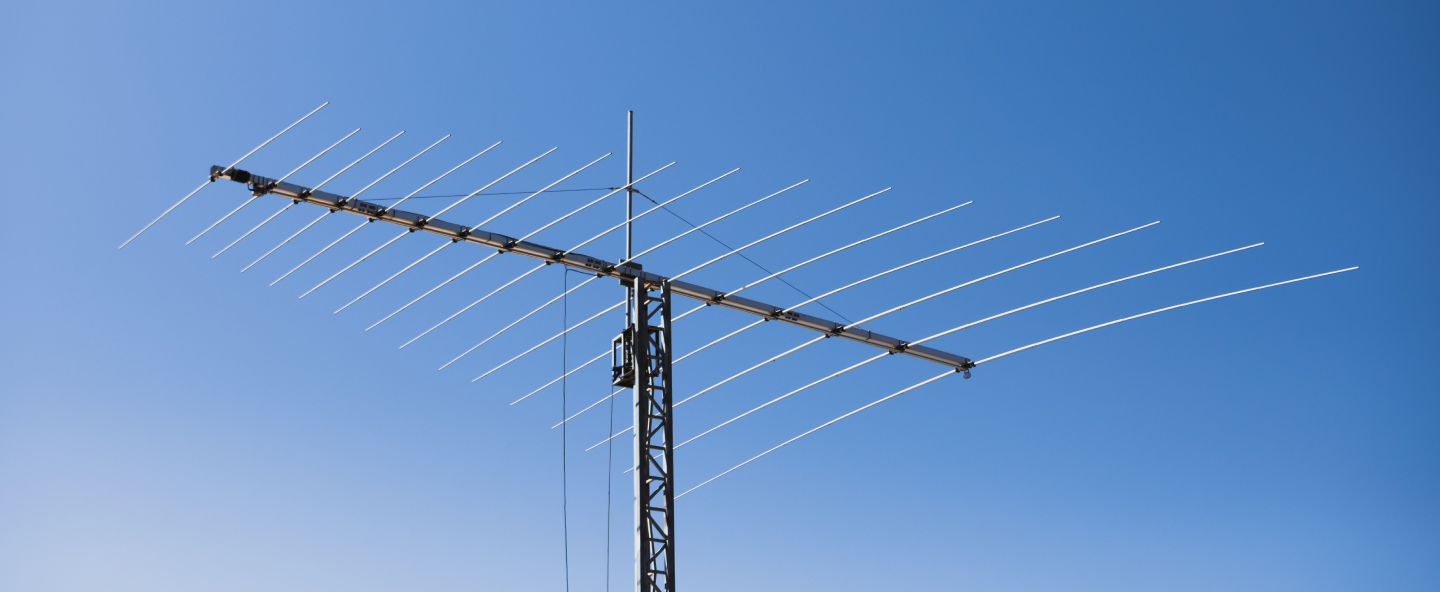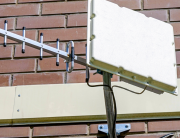If you want to increase the speed of your fixed mobile broadband, a dual Yagi antenna setup is your best bet.
These powerful setups, which include one antenna dedicated to downloads and one dedicated to uploads, are 10 times more powerful than omnidirectional antennas. Because they only amplify radio waves in the direction of the nearest cell tower, these setups have a bigger effect on the speed of your wireless connection than omnidirectional antennas.
While manufacturers typically advertise the potential signal gain of their antennas on the box, your actual signal gain also depends on your local coverage and the quality of the antenna installation. When poorly installed, a directional antenna can have next to no effect on signal strength. When properly installed, it can increase your signal strength up to 20 times.
With careful installation, you can establish a strong connection in an area with poor coverage. To maximize your signal gain, take into account the direction of the nearest cell tower, your local cellular coverage, and any obstructions between your antenna and the nearest tower.
1. Place the antenna on the side of your roof closest to a cell tower.
By placing your antenna setup on the side of your roof closest to the tower, your antenna will be able to establish a more direct connection with it. To find your carrier’s closest tower, use an online cell tower map like cellularmapper.net. Here’s how to use cellularmapper.net:
1. Filter your results by “Provider” and “Network.”
2. Do a “Location Search” or zoom in on your location to see all nearby towers.
3. Determine the direction of the nearest tower relative to where you live (the top of the map is north).
2. Look for the best coverage.
For best results, place your antenna where you already get the best 4G LTE signal. To calculate the actual signal strength of different locations on your roof, use a cellphone in field test mode. The signal readings you get in field test mode are more precise (and therefore more useful) than signal bars. To access field test mode on your phone:
On iOS, call *3001#12345#*. A signal strength indicator will pop up in the top left. Tap to switch between signal bars and actual signal strength in decibels per milliwatt (dBm).
On Android, navigate to Settings > About Phone > Network or Status. Under Network or Status, you’ll be able to see actual signal strength in dBm.
In field test mode, you can measure signal strength in decibels to milliwatts (dBm), where -50dBm is a perfect signal and -140dBm is no signal at all. The closer your reading is to -50dBm, the stronger the signal. The closer your reading is to -140dBm, the weaker the signal.
3. Avoid obstructions and interference.
The radio waves that connect your antenna to the nearest cell tower scatter when they pass materials with low permeability and permittivity, like structures made of metal or other materials that conduct electricity. To prevent obstruction and maximize your gains, install your antenna facing away from metal structures like steel building frames, metal roofs, or other antennas.
Radio interference also slows down your internet connection. Some household devices like microwaves and baby monitors operate on the same radio frequency band as wireless internet. To minimize interference in the fresnel zone between the antenna and the nearest cell tower, install your antenna on your roof or – if that isn’t possible – in your attic or next to a window.
4. Point your antenna towards the nearest cell tower.
Because directional antennas only transmit radio waves in one direction, the position of your antenna is critical. To get the highest gains, point the long arms of your antenna right at the nearest tower. If your phone has an RF port, connect it to your antenna before you lock it down. In test mode, you can pinpoint the exact location of the nearest tower as you slowly rotate your setup. Where your phone registers the highest signal strength, lock your antenna into place.
With a powerful dual Yagi antenna, you can get a strong signal in an area with poor coverage. For help choosing the directional antenna that’s right for you, give us a call at 866-439-6630.







Leave A Comment